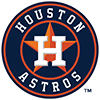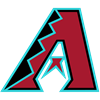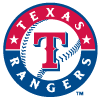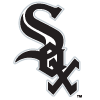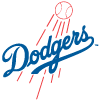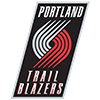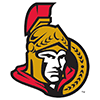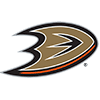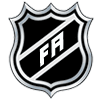2015 Nationals Team Preview: Mission Not Accomplished
For the second time in three seasons, the Nationals won the NL East only to come up empty in the playoffs, bowing out in the first round. For a franchise that hadn't seen the postseason since the 1981 Expos, and a city that hadn't enjoyed playoff baseball since the 1933 Senators, those are reasons to celebrate, but given the amount of talent on the Nationals' roster the results still aren't quite matching up with expectations. For a club that routinely strikes gold in the draft (Stephen Strasburg, Bryce Harper, Anthony Rendon, Ryan Zimmerman, Jordan Zimmermann and Drew Storen are all products of the club's scouting acumen since moving to DC) and is guided by a GM who seems to win almost every trade he makes, a couple of quick first round exits leaves a bitter taste in some people's mouths.
2015 could be the season to wash that taste away, however. For one thing, the rest of the division seems to have almost conceded the NL East to the juggernaut Nats. The Braves look to be rebuilding, or at least retooling; the Phillies' window has slammed shut as their best players have aged; Mets' owner Fred Wilpon is still caught in a financial bind that limits the team's ability to plug their roster holes; and while the Marlins have an impressive young core led by Giancarlo Stanton and Jose Fernandez, they don't have anywhere close to the complementary pieces around them that the Nats' young core does. Barring some sort of major disaster, the Nationals should be able to approach their first 100-win season and lock up the NL East title by August.
More importantly though, the club didn't sit still and coast to their status as a division favorite. The farm system got restocked, Yunel Escobar replaced Asdrubal Cabrera as the new veteran second baseman with a glove good enough for shortstop, and an already stacked rotation became almost incomprehensibly loaded with the addition of $200 million man, and 2013 AL Cy Young Award winner, Max Scherzer. Free agency looms next season for some key home-grown stars, but in the here and now the Nationals look set to tear through the 2015 regular season like it was made of tissue paper. As for the playoffs, well, one Madison Bumgarner-like run from Scherzer (or Strasburg, or Zimmermann, or...) plus some timely hits from a star-studded roster, and Washington's long title drought could finally be over.
Offseason Moves
Lost Adam LaRoche (White Sox), Asdrubal Cabrera (Rays) and Rafael Soriano (unsigned) via free agency
LaRoche was a solid middle of the order bat for the Nationals, who provided the lineup with some balance from the left side, but with Ryan Zimmerman's shoulder issues forcing a move across the diamond there was no way the team could keep him. Cabrera was a useful stopgap at second base after he was acquired at the trade deadline, but GM Mike Rizzo didn't have too much difficulty replacing him. Soriano's second half collapse ensured he wouldn't be back in Washington, and as of yet no other club has elected to give him a chance to prove he's not washed up.
Traded Ross Detwiler to the Rangers for Chris Bostick and Abel De Los Santos
The arbitration-eligible Detwiler no longer had a role with the Nationals after failing as both a starter and a long reliever, and got dealt to Texas. All things considered, the return was pretty good, as Bostick has the tools to be a future major league bench player, if not the hit tool to be a starter, while De Los Santos is a young, high-upside bullpen arm.
Signed Ian Stewart, Dan Uggla, Heath Bell, Mike Carp and Evan Meek to minor league contracts with spring NRIs
None of these veteran hitters are likely to win a spot on the 25-man roster, especially with Danny Espinosa still in the organization to provide depth around the infield, but Carp would provide some left-handed hitting bench support for a righty-heavy starting lineup, while Uggla is an intriguing wild card if his post-concussion vision issues are behind him. Both Bell and Meek will be in the hunt for a middle relief spot during spring training.
Traded Steve Souza and Travis Ott to the Rays as part of a three-team deal in exchange for Joe Ross and a PTBNL (Trea Turner)
Souza is coming off an amazing campaign at Triple-A, but with the starting outfield in Washington already set, Rizzo was able to parlay his potential (along with an unheralded but projectable Low-A lefty in Ott) into two excellent prospects. Ross adds another quality arm to the upper levels of a Nationals' system that could have a number of opening in its major league rotation in 2016, slotting in just below AJ Cole on the depth chart, while Turner (who technically can't be traded until June, so will remain Padres property for now unless some arrangement can be worked out) was the Padres' first round pick last year and immediately becomes the Nats' shortstop of the future, with the tools to become a solid major league defender and leadoff hitter.
Traded Tyler Clippard to the A's for Yunel Escobar
This is a big loss for the Nationals' bullpen, as the bespectacled right-hander has been one of the best relievers in baseball for years now, but Clippard's escalating cost in arbitration made his departure somewhat inevitable. Escobar is basically a like-for-like swap for Cabrera at second base, offering more on-base skills and less power than the younger middle infielder he's replacing. He's also coming off a poor defensive season at shortstop, although Rizzo does see him as insurance at that position should pending free agent Ian Desmond end up leaving at the end of the season.
Signed Max Scherzer to a seven-year, $210 million contract
After spending most of the offseason shedding players like Clippard due for big raises in arbitration, Rizzo suddenly zagged and signed Scherzer to the massive deal he'd been waiting for. There is some method to Rizzo's madness here, however. With Scherzer under contract, the club is much better positioned to trade one of their pending free agent arms in Jordan Zimmermann or Doug Fister, or let them walk next offseason and collect the draft pick compensation, or even swing a huge deal involving Stephen Strasburg (who has two years remaining before free agency). Plus, it's hard to argue with the acquisition of a perennial Cy Young contender when your team is already a World Series favorite. Will this deal be an albatross before it runs its course? Almost certainly. Will Nats fans care if Scherzer helps bring home a title or two? Almost certainly not.
Signed Casey Janssen to a one-year deal with a mutual option for 2016
Bullpen depth depleted, Rizzo picked up the former Blue Jays closer for a fairly reasonable price. Janssen's numbers sagged badly last season, but the right-hander has always relied more on his control than his raw stuff, and could be able to rebound in a less pressure-filled set-up role. Should Storen falter in ninth inning duties though, Janssen would likely get the first shot at replacing him simply based on his resume.
Projected Lineup (vs. RHP/LHP)
1. Denard Span, CF
2. Anthony Rendon, 3B
3. Jayson Werth, LF
4. Ryan Zimmerman, 1B
5. Bryce Harper, RF
6. Ian Desmond, SS
7. Wilson Ramos, C
8. Yunel Escobar, 2B
The defense may need time to gel given how many players are moving to new positions, but with the exception of Escobar stepping in for Asdrubal Cabrera at the bottom of the order, this is the same offense that finished last season third in the NL in runs per game. Werth, Zimmerman, Harper and Ramos all have checkered injury histories, but health is the only thing standing between Washington and another placing among the NL's best lineups.
Projected Rotation
1. Max Scherzer
2. Stephen Strasburg
3. Jordan Zimmermann
4. Gio Gonzalez
5. Doug Fister
Your mind-boggling bit of trivia for the day: every member of the Nationals' current projected Opening Day rotation has had a top 10 Cy Young Award finish within the last three seasons, and Stephen Strasburg, with a lone ninth place in 2014, has done the worst of the bunch in the voting. No team in the majors has both the star power and the depth that the Nationals' rotation can boast.
Closer:Drew Storen finished up 2014 in the closer role and thrived, converting all 10 of his save chances in September and making both Rafael Soriano and Tyler Clippard expendable in the offseason. Storen's K/9 rate dropped last year, but thanks to mechanical tweaks and increased usage of his changeup instead of his slider as a contrast to his 92-95 mph fastball, he was able to produce more groundballs and post a career-best 0.32 HR/9 along with an exceptional 1.12 ERA and 0.98 WHIP. Storen is far from a stable commodity after a bumpy ride through the first few seasons of his career. However, as long as he's able to keep attacking the bottom of the zone, he should be an effective closer for the Nationals, and the club's offseason moves give him plenty of job security.
Key Bullpen Members: The Nationals no longer have the three-headed bullpen monster they relied on last summer to shorten games, but there are still some quality arms behind Storen. Free agent signee Casey Janssen has closing experience should Storen stumble, but needs to prove himself again after seeing a big drop in his fastball velocity, and his effectiveness, in 2014. His average fastball was down to 89 mph, and it caught up to him in the second half (6.46 ERA) thanks to five multi-run outings. His secondary pitches struggled, too, and cast some doubt over him for this year, even accounting for the small sample of his second half.
Matt Thornton's best days are far behind him, and his slider doesn't have the bite it once did, but he's still capable of humming a mid-90s fastball over the plate and being a reliable setup man. He'll mostly work in the seventh and eighth innings, meaning anyone who adds him to their fantasy squad will have to be content with the occasional matchup save chance or vulture win.
Aaron Barrett's first season in a major league bullpen was a relatively successful one, as the right-hander rode his heavy, low-mid 90s fastball and hard slider to a 2.66 ERA, 1.30 WHIP and 10.8 K/9 ratio in 40.2 innings. His midseason demotion to Triple-A was as much due to roster constraints, brought on by position player injuries, as it was a reflection on his performance, and Nationals manager Matt Williams showed some confidence in him down the stretch. He should settle into a seventh-inning role.
Jerry Blevins' 2014 performance appears poor on the surface, but versus left-handed batters, he allowed just a 2.51 ERA and 40:6 K:BB ratio in 32.1 innings along with a .153/.202/.217 slash line, numbers more in line with his last two seasons in Oakland. The Nationals don't have anyone else in their bullpen who fits in a standard LOOGY role, so if manager Matt Williams can limit Blevins' plate appearances to mostly same-side matchups, he should put up a much better line in 2015 and might even be marginally useful for fantasy purposes.
If there's one person in Washington who hated the Max Scherzer signing, it was Tanner Roark, given his impressive performance as the fifth starter. Now relegated to swing man duty, Roark still needs to prove his 2.85 ERA and 1.09 WHIP in 2014 weren't flukes, as right-handers with low-90s fastballs and a merely OK assortment of breaking pitches don't impress the scouts much, but his excellent control (1.8 BB/9 so far in his big league career) and the late movement on his pitches prevents hitters from doing much damage off him despite his lack of big-time strikeout numbers.
Notes of Import, Fantasy or Otherwise:
Is GM Mike Rizzo done dealing?
As the roster stands now, the Nationals will head into Opening Day without any holes in the starting lineup and a jewel-encrusted rotation that is the envy of 29 other organizations. However, just because something is good doesn't mean it can't get better. Washington's frankly ridiculous pitching depth gives Rizzo the luxury of trading a Jordan Zimmermann or Stephen Strasburg without significantly damaging the club's immediate chances of success, and perhaps even increasing it with the addition of the right supplemental pieces (another top bullpen arm would be nice) along with a haul of prospects. Rizzo has done a deft job in his tenure of keeping his options open and building a winning squad while not sacrificing the future for the present, but his boldest move might be yet to come.
Will Bryce Harper ever stay healthy and live up to his hype?
When you make the cover of Sports Illustrated as a high schooler, get taken first overall in the draft and win Rookie of the Year as a five-tool outfielder, it's reasonable to expect that your third season in the majors will see you collect more than 13 home runs, 32 RBI and two stolen bases. Injuries hampered Harper in both 2013 and 2014, however, and there are plenty of experts this preseason willing to bet the under on his production rather than get burned again. His current ADP placed him towards the end of the third round in a 12-team mixed draft, but really, that's just a hedge. Another season with frequent and/or lengthy trips to the DL is going to see him return far less value than that draft slot, but if Harper does come through with a 140-plus game campaign, he's going to produce as much as or even more than your first round pick. For all his disappointing numbers so far, Harper's various injuries have been about bad luck not a chronic condition, and he still has exactly one career home run less than Giancarlo Stanton did before his 22nd birthday. Titles aren't won by the timid, and Harper's talent at the plate has never been in question. The risk-reward equation here still screams "Buy!"
Strengths: A second-to-none rotation that features multiple aces, one through five quality, a sixth starter coming off a 15-win, 2.85 ERA campaign and a handful of top prospects in the minors that could begin pushing for big league jobs as soon as this season. An offense that features power, contact and on-base ability up and down the batting order. Perhaps most importantly, a roster core that twice now has come up empty in the postseason and is itching to prove they can get over the hump.
Weaknesses: The Nationals' once-impressive bullpen depth is thinned, and if Storen stumbles as the closer there could be trouble. Half the projected starters will be playing new positions (Harper and Werth are swapping outfield corners, Zimmerman is making his long-anticipated move to first base and Escobar slides from shortstop to second base), which could impact a defense that was only average at best last season.
Rising:Drew Storen - The Nationals have always wanted Storen to be their closer, ever since they selected him nine picks after Stephen Strasburg in the first round of the 2009 draft, and after his stellar showing in the role last September the club sent all his main competition for the job packing. He doesn't have an elite strikeout rate, but with the exception of 2013 his ERA and WHIP have been excellent, and Storen has as much job security as any closer in baseball with only 18 saves to his name over the last three years. Don't be fooled into thinking the Casey Janssen signing represents a threat to his spot. Barring a meltdown, Storen should be the Nats' ninth inning option for the foreseeable future.
Declining:Jayson Werth - It's almost too easy to name the guy who turns 36 in May as 'Declining', but Werth is coming off two straight useful-to-good fantasy seasons and isn't necessarily an obvious candidate to nosedive at first glance. He's also missed an average of 43 games a year over the last three seasons though, which is the biggest red flag on his CV. Werth's basestealing ability is almost gone, his power is starting to dwindle, and while he could have another decent season or two left in him, he could also fall off the cliff any time now.
Sleeper:Tanner Roark - Roark would be locked in as the number three starter in some organizations, maybe even number two, but the Nationals' embarrassment of pitching riches has him ticketed for a long relief role this year despite an outstanding beginning to his big league career. Things can change quickly though, and with Jordan Zimmermann and Doug Fister both on the trading block due to their status as pending free agents, not to mention the possibility of an injury to any of the five hurlers ahead of him, Roark could still end up seeing plenty of starts and having plenty of value in 2015.
Supersleeper:Danny Espinosa - He's almost a perennial supersleeper at this point, as despite his struggles the last few seasons, in fantasy leagues of any depth middle infield is just too thin to ignore someone with 20-20 potential. His numbers last season were again bad, but they were dragged down by an absolutely awful performance from the left side of the plate, and as a result Espinosa is giving up switch-hitting entirely. He'll have to learn to hit right-handed against right-handed pitching this spring, but his .301/.374/.485 line last year against lefties gives some indication of the damage he's capable of from the right side of the plate. Yunel Escobar will be the Nationals' starter at second base, but if Espinosa finds himself as a hitter, he could work his way into a super-sub kind of role and be just an injury away from real fantasy value.
Top Prospects:
Lucas Giolito, RHP - Now two years removed from his Tommy John surgery, Giolito looked every inch the future ace as he tore through the South Atlantic League, posting outstanding 10.1 K/9 and 3.9 K/BB ratios over a restricted workload of 98 innings. The tall, young right-hander already possesses a high-90s fastball and power curve that will overmatch just about anybody he faces in A-ball, so the Nationals are focused on building up his stamina and having him develop his changeup into a quality offering, something which could be the difference between Giolito being merely good in the majors or being one of the best in the game. The club has no reason to rush him given their loaded major league rotation, so Giolito could easily spend two more seasons or more in the minors before getting the call, but at the moment, all signs point to dynasty owners being amply rewarded down the road for their patience.
Trea Turner, SS - A former college teammate of highly coveted lefty Carlos Rodon, Turner closed out a three-year career at North Carolina State with a .342/.435/.507 line and 113 stolen bases in 127 attempts over 173 games despite an ankle injury that limited his impact as a basestealer during his sophomore campaign. Speed is easily Turner's best tool and he's an 80-grade runner, while his bat and plate discipline should be good enough for him to develop into a leadoff hitter at the big league level down the road. Defensively, Turner shifted to shortstop after the 2013 season for the Wolfpack, and it's believed that he has the footwork necessary to stick at short as he advances, and the arm strength necessary to handle third base if it's decided he's a better fit there. Upon signing, Turner went 23-for-27 as a basestealer at short-season Eugene and Low-A Fort Wayne, while toting an impressive .369/.447/.529 line over 46 contests at the latter stop. Turner was named as the player to be named later in the Wil Myers trade, but won't join the Nationals until next June due to a technicality. His 2015 status may be murky as a result, but he's seen as a potential impact player when he finally starts playing for his new organization.
Michael Taylor, OF - Just as Brian Goodwin did the year before, Taylor turned in a Double-A performance in 2014 that launched him to the top of the Nationals' position player prospect list. Unlike Goodwin, Taylor put together an actually impressive statistical season rather than one that only looked good in comparison to his previous output, hitting .313/.396/.539 with 22 home runs and 34 steals. His strikeout rate also spiked, though, and that empty air in his swing came back to haunt him in brief stops at Triple-A and the majors. Now established as the Nats' center fielder of the future, the 24-year-old will need to find a way to make more consistent contact if he wants to fully realize his five-tool potential, but with Denard Span under contract for at least one more season, Taylor will get the time in the minors that he needs to work on his game.
A.J. Cole, RHP - Splitting the season between Double-A and Triple-A, Cole did enough to solidify his status as the likely next Nationals' starting pitching prospect to get the call to the big leagues, posting a combined 3.16 ERA and 1.34 WHIP over 134 innings with a strong 3.5 K/BB ratio. Despite his size, the tall right-hander doesn't have the overpowering raw stuff of fellow Nats prospect Lucas Giolito, which is reflected in Cole's relatively pedestrian 7.5 K/9 rate across the two levels in 2014, but he pounds the zone well with his 92-95 mph fastball while mixing in a slider and curve. His breaking pitches are both works in progress, which could make his transition to the majors a bumpy one. If trades or injuries create a couple of holes in the Nationals' major league rotation, Cole could be at the head of the line for an audition as the new fifth starter.
Reynaldo Lopez, RHP - Signed out of the Dominican Republic in 2012 as an 18-year-old, Lopez raced up prospect lists after a breakout season in which he struck out 70 batters in 83.1 innings between the New York-Penn and South Atlantic leagues. The right-hander features a heavy mid-90s fastball that he can crank up to near triple digits when he feels the need, plus a work-in-progress breaking ball and changeup, and if everything comes together, he'll give the Nationals yet another future ace to slot in alongside Stephen Strasburg and Lucas Giolito. Lopez is a long way from being in their company, though, and even the Yordano Ventura comps getting bandied around are very premature. The kid has massive upside, and that fastball is as close to a guarantee of a big league job as you'll find, but you may want to wait and see if he can dominate over a full season before anointing him as the next big thing.
Joe Ross, RHP - Ross was trending toward joining his older brother Tyson in the San Diego rotation as early as 2015 before he was traded to Washington in the offseason. Reaching Double-A for the first time as a 21-year-old last season, the younger Ross impressed with a 19:1 K:BB over 20 innings with San Antonio. The success down the stretch followed improvement in his numbers with the move from the Midwest League to the California League to begin 2014. In addition to missing bats at a steady clip, Ross has continued to induce a lot of contact outs on the ground, posting a combined 1.59 GO/AO in 2014. With a three-pitch arsenal that includes a 91-92 mph two-seam fastball (he can touch 96 mph with his four-seamer), above-average slider and improving changeup, Ross may become a very good mid-rotation starter in short order.
Wilmer Difo, SS - Difo spent an entire season with a full-season affiliate for the first time in his career in 2014, and the results were impressive. The 22-year-old split his time between second base and shortstop, showing more consistent defensive chops at the former position. While he failed to appear on most preseason organizational top prospect lists for the Nats, Difo opened plenty of eyes last season with his combination of power and speed, which included a 49-for-58 mark as a basestealer. Listed at 6-feet and 175 pounds, the switch-hitting Difo hit the ball on the ground less frequently last season, showing increased pop and maximizing the value of his plus-speed. The 14 home runs he hit last season were more than double his total from the previous four seasons combined. Difo will make the move to High-A in 2015, but he could begin to move a bit more quickly through the Nats' system after taking a few years to solve rookie ball.
Erick Fedde, RHP - The Nationals selected Fedde in the first round of the 2014 first-year player draft knowing that he would be rehabbing from Tommy John surgery performed just a month earlier, but given their track record with players like Lucas Giolito, you have to give them some credit for knowing what they're doing. In college, Fedde displayed a low-90s sinking fastball that he could crank up to 96 mph when he needed to, along with a sharp slider and the makings of a useful changeup. If he returns from surgery without a hitch, and used his time off the mound to improve his strength and fitness as well as rehabbing his elbow, he could advance through the Nats' system as quickly as their ultra-cautious plan will allow him. The earliest he'll realistically be knocking on the door of the major league roster is 2018, but keeper league owners who aren't deterred by that timetable could wind up with a gem if they grab him now.






